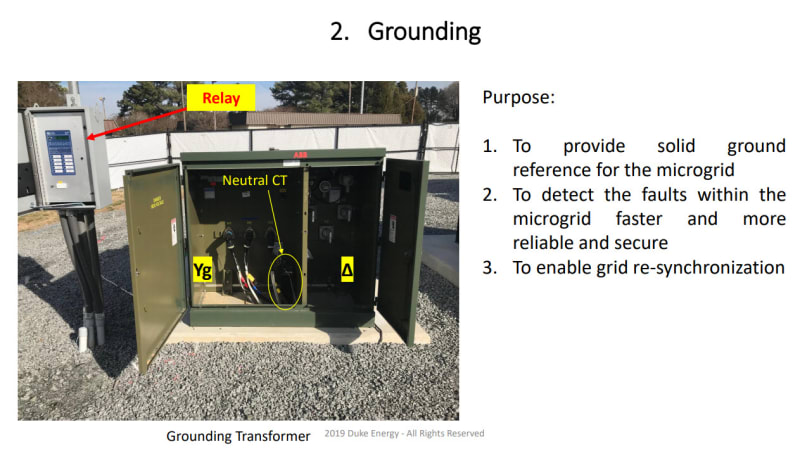spark706
Electrical
- Nov 29, 2018
- 7
I am attempting to understanding some finer technical aspects for synchronizing a rotational-based or inverter-based generator with the utility system without the generator and the utility system in a delta-delta or a floating wye-floating wye configuration. For now please disregard the concept of an ungrounded generator as this is a hypothetical question based on a conversation I had with another engineer today.
My understanding is that a common ground reference is necessary with the utility system which is easily accomplished with a generator that is grounded or via the use of a shunt grounding bank. Such a configuration will provide necessary ground reference with the utility to allow a closed transition of a microgrid back from islanding or connect a rotational generator to the grid for parallel operation. I believe that for the two systems to align the Phase Sequence, Voltage Magnitude, Frequency, and Phase Angle must align, but I was under the impression that to ensure that would happen, the ground reference is crucial. Essentially, when trying to align four separate criteria without a known quantity that the the generator and the utility system share would be extremely difficult or impossible to achieve.
So, with the above said, is it possible to synchronize an ungrounded rotational-based generator, for instance, through a delta/wye-floating ground transformer to a utility system that is or is not grounded? If so, would you please point me to some specific literature that discusses the actual need for the ground component during synchronization.
Many Thanks for any help or guidance.
My understanding is that a common ground reference is necessary with the utility system which is easily accomplished with a generator that is grounded or via the use of a shunt grounding bank. Such a configuration will provide necessary ground reference with the utility to allow a closed transition of a microgrid back from islanding or connect a rotational generator to the grid for parallel operation. I believe that for the two systems to align the Phase Sequence, Voltage Magnitude, Frequency, and Phase Angle must align, but I was under the impression that to ensure that would happen, the ground reference is crucial. Essentially, when trying to align four separate criteria without a known quantity that the the generator and the utility system share would be extremely difficult or impossible to achieve.
So, with the above said, is it possible to synchronize an ungrounded rotational-based generator, for instance, through a delta/wye-floating ground transformer to a utility system that is or is not grounded? If so, would you please point me to some specific literature that discusses the actual need for the ground component during synchronization.
Many Thanks for any help or guidance.

![[deadhorse] [deadhorse] [deadhorse]](/data/assets/smilies/deadhorse.gif) "Ground" is not the same thing as "Neutral".
"Ground" is not the same thing as "Neutral".